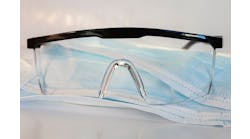As we enter a new year, this time it feels like we’re also entering a whole new world. The future looks much different than it has for a while, with self-driving cars, new vehicle materials requiring more highly trained technicians (who may also demand better retirement provisions), new health insurance issues, tighter government enforcement of pollution laws, an unpredictable economy with fewer people driving new cars, and older cars reaching the total loss threshold faster. All of this and more will require a tighter control of finances and other resources by shop owners and managers.
At the SEMA Show in Las Vegas, SCRS offered a Repairer Driven Education (RDE) session with Kim Hazelbaker, senior vice president for the Highway Loss Data Institute (HDLI), who addressed this question: Is new vehicle technology endangering your business? His organization’s database currently holds the insurance records of more than 150 million vehicles. Although the prevalence of self-driving cars may be a long ways off, test vehicles are already being produced. Meanwhile, the crashworthiness of all vehicles is rapidly being improved along with other factors that will decrease the amount of repair work coming into shops. New vehicle materials and computer technologies will also call for more highly trained technicians who will undoubtedly demand higher pay, good health insurance and better retirement programs.
Last April, SCRS held a National Industry Issues Forum in Oklahoma City. Although it was basically a town-hall forum, there was much agreement that many difficult problems facing the industry could be reduced by simply improving business and accounting practices. Although the dollars-times-hours for determining paint and material charges has been replaced in many shops with a cost accounting calculation system, real cost accounting has yet to take hold broadly across the industry.
I was startled by a brief article in July about Ray Gunder, owner of Gunder’s Auto Center in Lakeland, Fla., who filed four lawsuits to recover short-pays for various services and materials provided to his customers. Four insurance companies had refused to pay. Each customer authorized Gunder to act on their behalf to seek recovery of the underpayments. Although the amounts were generally small, Gunder said he wanted to set a case precedence that customers can use in the future to be properly compensated. Although the article didn’t say so, I have to assume Gunder wasn’t a DRP for any of those insurance companies, so he didn’t hesitate to make the demands. In this more difficult future, shop owners may have to flex a little more muscle to get what they (and their customers) deserve.
I recently attended a California Autobody Association meeting where the speaker was Jack Molodanof, an attorney for the association. Membership and attendance at meetings like this is pitifully small, but Jack showed why shop owners must participate more to survive in this more difficult future. Several years ago, a bill was passed requiring insurance companies that prescribed the use of after-market parts to warranty those parts. Now a new bill was pushed by the insurance industry to shift that liability onto the shop installing the part. With the help of the insurance commissioner and legislators Jack was able to reach, the bill was killed, saving shops from significant potential liability. Another bill is being pushed to require insurance companies to pay for a replacement part if a prescribed part turns out to not be of “like kind and quality” from an OEM part. The insurance industry has vowed to fight this one all the way to the Supreme Court if necessary.
Shops can no longer choose to not participate in associations like this that are striving to keep them safe from attacks on their profitability. The forces at work that may be endangering our businesses are too big for us to go it alone. This next year, if a shop is to survive debilitating changes, it will be necessary to learn about new ways to afford better technicians, collect what is rightfully owed to your shop, and to more efficiently control finances and costs to keep profits where they belong. When you’re getting paid for fewer hours and the cost of those hours is higher, you need to manage those costs better and get paid more for those hours, or you will stop operating at a profit.
Tom Franklin, author of Strategies for Greater Body Shop Growth, has been a sales and marketing consultant for more than 40 years.




